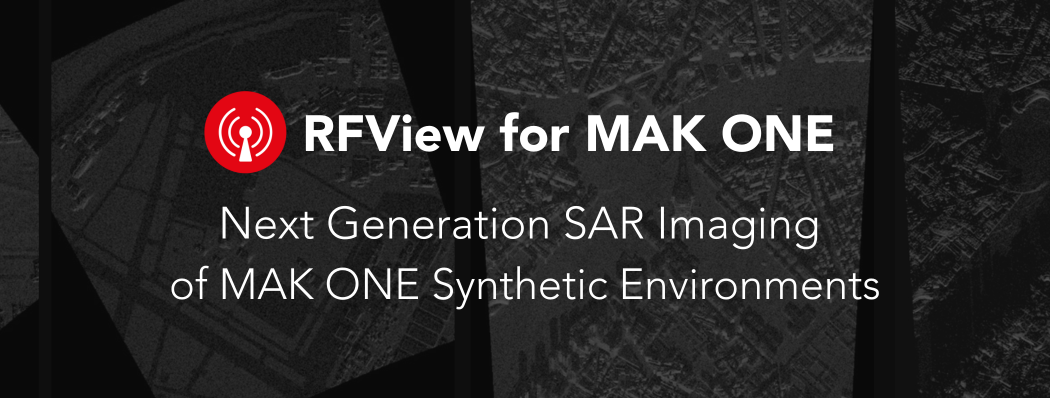
Synthetic Aperture Radar (SAR) Imaging
in the MAK ONE Environment
by Len Granowetter, CTO
It’s hard to believe that it was only at I/ITSEC 2023 that I first met the folks from ISL – radar simulation experts that I’ve worked with so closely ever since. Now, only fourteen months later, I’m so proud of the new addition to the MAK ONE ecosystem that our companies have built together: RFView for MAK ONE.
Our partnership brings together two best-in-class technologies – MAK’s multi-domain, DIS/HLA-native, terrain-agile, whole-earth synthetic environment and ISL’s physics-based radar simulation capability. The integrated product allows us to bring high-fidelity simulated radar imaging into the MAK ONE virtual world – fully correlated with the VR-Forces simulation engine, and with VR-Vantage’s out-the-window views, EO/IR, and other sensor displays.
Although MAK has had radar simulation capabilities in the past, there’s a lot we’ve learned from the ISL folks over the past year: how ray tracing is essential for accurately modeling radar’s multi-bounce effects, why targets get “displaced” from their SAR shadows if they are moving in the range direction, and how repeater jamming can create 2D grids of false targets in SAR images. ISL has been developing engineering-level radar simulation and analysis technology for 40 years, mostly supporting MATLAB users. But their recent migration to a real-time GPU-based approach enabled its use in virtual simulators and training applications.
Of course, ISL needed a simulation environment in which to run their radar models: one that could load all the formats expected in the M&S industry – CDB, OpenFlight, FBX, and more; one that could stream tiled source data such as DTED, GeoTIFF, shapefiles, and OpenStreetMap from a terrain server using open web mapping protocols; one that could procedurally generate vegetation from geo-specific land use data, generate building geometry from areal footprints, and simulate a dynamic ocean. A platform that could model clouds and the environment based on an accurate ephemeris model; and one that could populate the world with simulated military and civilian entities on the ground, in the air, on the sea, and in space. They found all these capabilities, of course, in the MAK ONE platform.
The RFView for MAK ONE product launched at I/ITSEC 2024 and is now available to early adopters.
Join the RFView for MAK ONE Early Adopter Program
To celebrate the launch of RFView for MAK ONE, we’re offering an Early Adopter Program with 10% off for customers who purchase before June 25. If you're interested in seeing RFView for MAK ONE in action, or if you want to join the Early Adopter Program, reach out to us at
To learn more about RFView for MAK ONE, be sure to register for our upcoming webinar on 3/4 at 10:30 am EST or 9:00pm EST. You can also take a look at our official partnership announcement.


